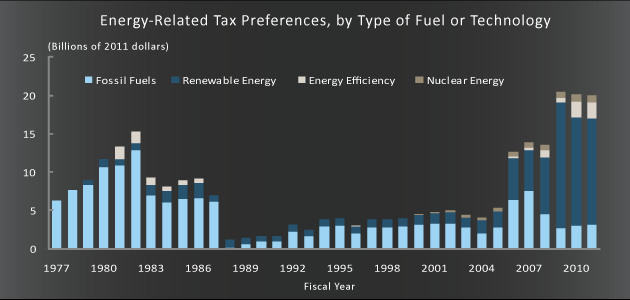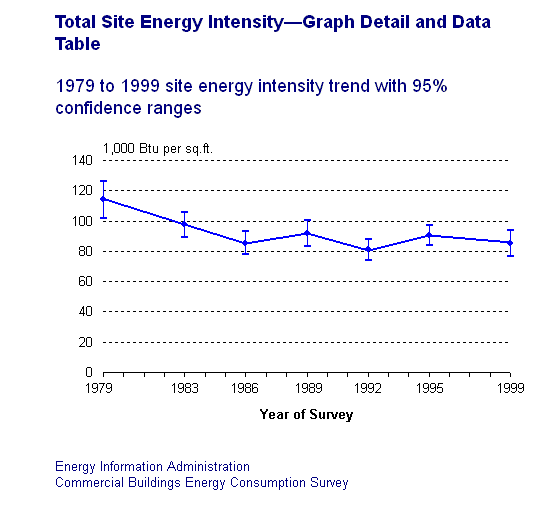60 item(s) were returned.
A recent Congressional Research Service report titled “Rising Gasoline Prices 2012” states that Congress has “limited short term options … to address gasoline prices.” The report identifies six short-run policy options – a Strategic Petroleum Reserve release, a gasoline tax holiday, relaxed fuel specifications, limits on refined gasoline exports, limits on commodities speculation, and diplomatic measures – and concludes that it is unclear “what the price impact of these short term options would be” and that they would involve policy tradeoffs which may include “national security, fiscal, and health priorities.” The report briefly addresses longer-term policy options, i.e. “measures that… [more]
View InsightA recent report from the Congressional Budget Office found that in 2011 federal support for fuel and energy technology development and production was $24 billion. Of this, $20.5 billion, or 85%, was in the form of “tax preferences—such as special deductions, special tax rates, tax credits, and grants in lieu of tax credits”; the remainder was made up by the Department of Energy’s spending programs. Of the total $24 billion provided in 2011, about $16 billion, or 78%, went toward support of renewables, energy efficiency, and alternative vehicles. According to the report, historically energy-related tax preference support was “primarily… [more]
View InsightSenate Energy & Natural Resources Chairman Jeff Bingaman (D-NM) has introduced the Clean Energy Standard Act of 2012, which would require electric utilities to derive increasing percentages of their supply mix from low-CO2 sources. The bill would take effect in 2015, and would require that by 2035 84% of power from large utilities come from low-CO2 sources. Sources eligible under the legislation include: renewables, such as wind and solar, “qualified” renewable biomass and waste-to-energy, hydropower, natural gas, and nuclear. Facilities with CO2 capture and storage, and some combined heat and power facilities, are also eligible. The bill establishes a market-based… [more]
View InsightPresident Obama sent his requested FY2013 budget to Congress Monday, and requested, among other energy-related items, significant increases to energy R&D, renewable energy investments, and energy efficiency programs. From the request: “In light of the tight discretionary spending caps, this increase in funding is significant and a testament to the importance of innovation and clean energy to the country’s economic future.” Among the energy-related budget requests: $27.2 billion to the Department of Energy, a 3.2% hike over FY2012 $5 billion for DOE’s Office of Science $2.3 billion for DOE’s Energy Efficiency and Renewable Energy office – a 29% increase –… [more]
View InsightCommercial buildings account for approximately 19% of U.S. energy use. From the late 70’s to the mid-to-late 80’s, the energy use intensity – the energy used per square foot of space – of America’s commercial buildings declined significantly, according to the EIA. However, as of the most recent data, those efficiency gains ceased in 1986, despite technical efficiency improvements in most building elements: windows, materials, HVAC, lighting, etc. The Greater Philadelphia Innovation Cluster for Energy-Efficient Buildings (GPIC), a U.S. DOE Energy Innovation Hub, is working to identify the cause of this gap between building efficiency and technical potential, and address… [more]
View InsightProfessor of Public Policy
Georgia Institute of Technology
In his 2011 State of the Union address, President Obama proposed a Clean Energy Standard (CES) requiring that 80 percent of the nation’s electricity come from clean energy resources by 2035. Over the past decade, Congress has debated renewable electricity standards, typically allowing energy efficiency to meet a portion of the target. For example, in 2009, an RES was included in the American Clean Energy Leadership Act of 2009, requiring 15% renewables by 2021, and 27% of this target could be met by energy efficiency. What happened to energy efficiency in the President’s proposal? A well-designed CES policy would enable… [more]
View InsightProfessor of Physics
City College of the City University of New York
Despite aggressive requests from the Obama Administration and the Department of Energy’s Office of Science, the House in the most recent appropriations debate made significant efforts to reduce funding for climate-related science. The Senate prevailed in the subsequent negotiations, and nearly all Office of Science programs received modest funding increases. Although it lost its appropriations battle, the House’s efforts to trim the Office of Science’s funding demonstrate its strong skepticism about climate science. Further reflecting its attitudes, the House defunded enforcement of standards for more efficient light bulbs, publicly challenged the validity of climate science, relentlessly pushed the Keystone XL … [more]
View InsightOil prices are expected to average between $100 and $120/barrel in 2012. “Economists say they expect prices to remain high despite the relative weaknesses of the American and European economies because global demand for oil … is escalating and outstripping supply.” [New York Times] Due in part to consumers driving less and purchasing more fuel efficient cars, the United States economy has weathered high oil prices relatively well in 2011. Bernard Baumohl, chief global economist at the Economic Outlook Group, told the Times that “the danger is if oil starts to move toward $130 a barrel, or even higher… Then… [more]
View InsightSenator Tom Coburn (R-OK) has released the 2011 Wastebook, his annual “guide to some of the most wasteful and low priority government spending”. Among the report’s targets is DOE’s Weatherization Assistance Program (WAP), a program that improves the energy efficiency of low-income family homes. Among the criticisms of the program highlighted by Senator Coburn: The DOE Inspector General found in a 2010 survey that the program suffered from poor workmanship, inflated contractor and material costs, and substandard home inspections to a level that “put the entire program at risk.” WAP-funded job training programs are sometimes unable to place trainees in… [more]
View InsightExxonMobil recently released its 2012 Outlook for Energy: A View to 2040, a report forecasting energy trends out for the next several decades. Among the projections highlighted in ExxonMobil’s announcement: “Global energy demand is expected to rise by about 30 percent from 2010 to 2040, [but] demand growth would be approximately four times that amount without projected gains in efficiency.” “ExxonMobil sees advanced hybrid vehicles accounting for 50 percent of the cars people will drive in 2040, compared to about 1 percent today. This, plus improved fuel economy in conventional vehicles, will cause demand for energy for personal vehicles to… [more]
View Insight

